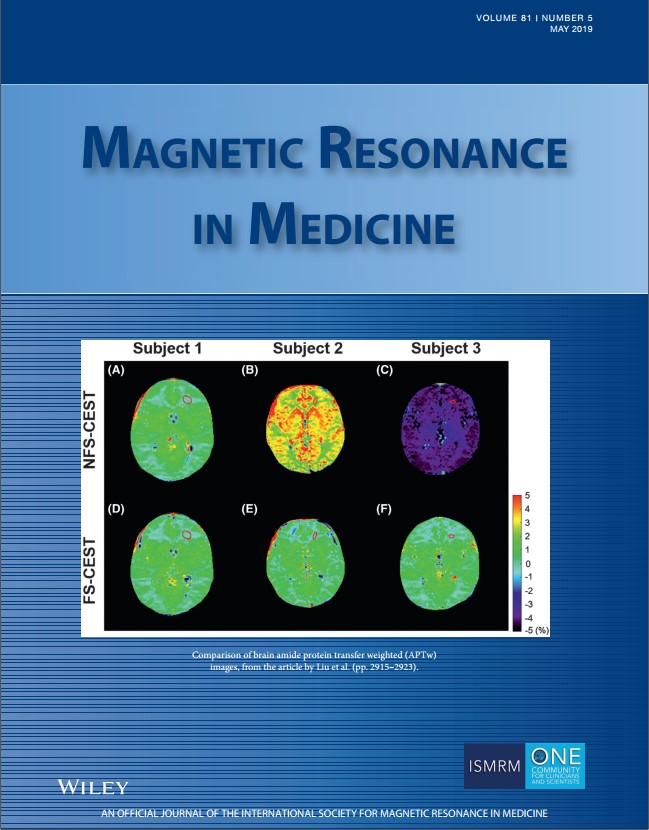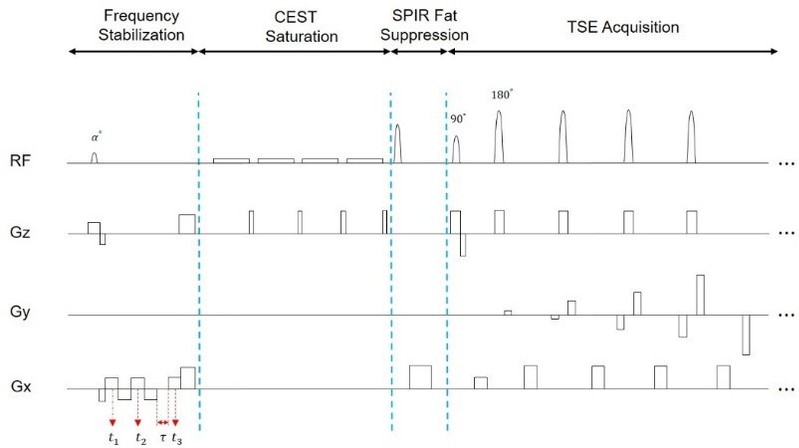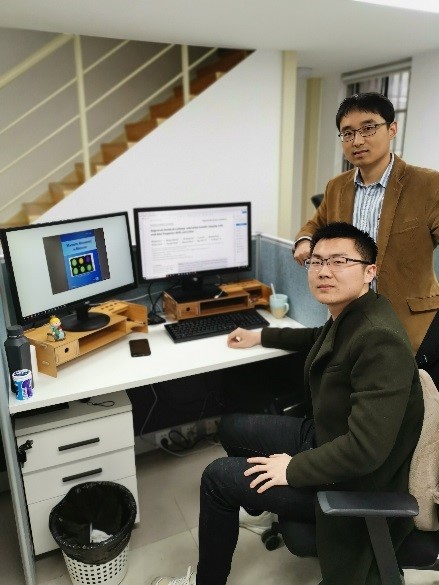Recently, the paper of Research Professor Zhang Yi's group entitled Improved Chemical Exchange Saturation Transfer Imaging with Real-time Frequency Drift Correction was published in the top journal Magnetic Resonance In Medicine, and was selected as the cover of this issue. This is the only cover article in the past four years of which the first author and corresponding author are all from China.

Figure 1 Cover of Magnetic Resonance In Medicine
Chemical exchange saturation transfer (CEST) is one of the most advanced molecular magnetic resonance imaging (MRI) techniques, which can indirectly measure the signal of low concentration metabolites or free proteins that are difficult to detect by conventional MRI techniques.
In CEST imaging experiments, high stability of main magnetic field B0 is usually required. However, in clinical environments, heating of shim elements induced by eddy currents and mechanical vibrations can lead to severe B0 drift, which is typically encountered in the echo planar imaging (EPI) sequences that require rapid gradient switching. Furthermore, B0 drift will continue for a considerable amount of time after the EPI acquisition until the shim elements completely cool down. If one performs a CEST imaging scan not long after an EPI acquisition, the performance of CEST imaging can be greatly influenced.
Focusing on the effects of frequency drift on chemical exchange saturation transfer (CEST) imaging, Prof. Zhang’s team propose a FS-CEST sequence for correcting artifacts attributed to B0 drift in real time. The sequence consists of four modules, including frequency stabilization, CEST saturation, fat suppression, and readout, as shown for one TR cycle in Figure 2.

Figure 2 Sequence diagram of FS-CEST
The sequence corrects B0 drift by adding the frequency stabilization module, which measures the B0 frequency in every TR cycle and corrects any possible frequency offset in the succeeding CEST saturation, lipid suppression, and acquisition modules in real time.
Experiments showed that the FS‐CEST sequence generated substantially more stable MTRasym spectra and APTw images than the conventional NFS‐CEST sequence. It provides an effective approach for B0 drift correction without additional scan time and should be adopted on heavy‐duty MRI scanners.

Figure 3 Research Professor Zhang Yi (Right) and Liu Ruibin